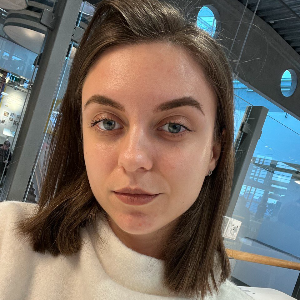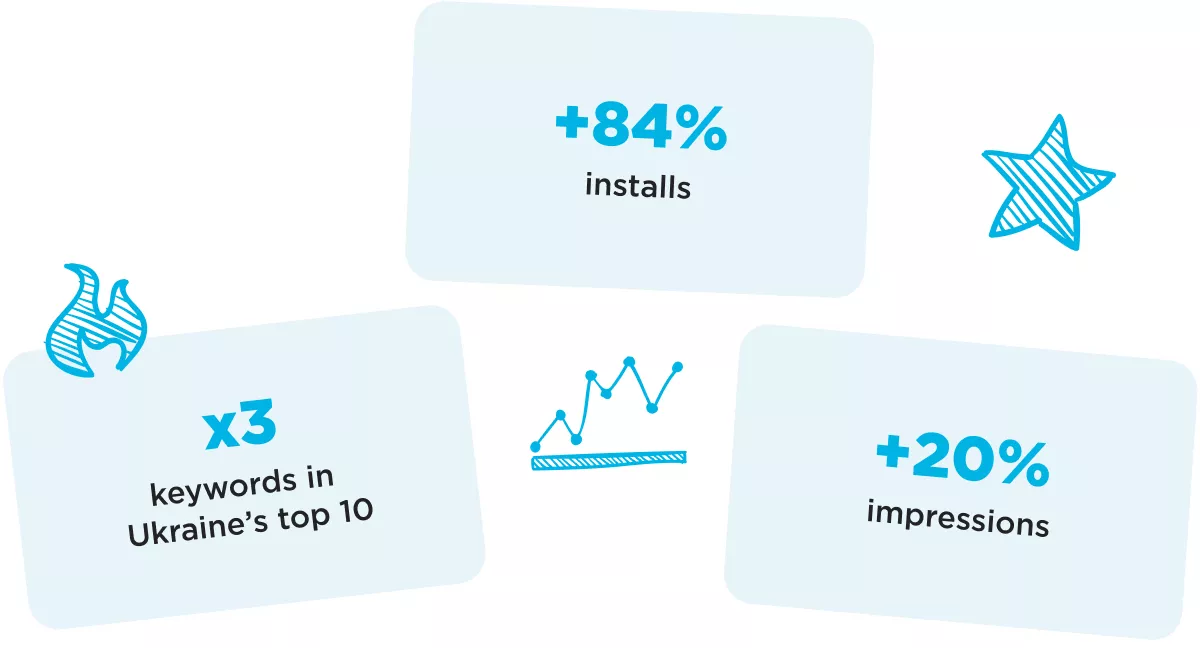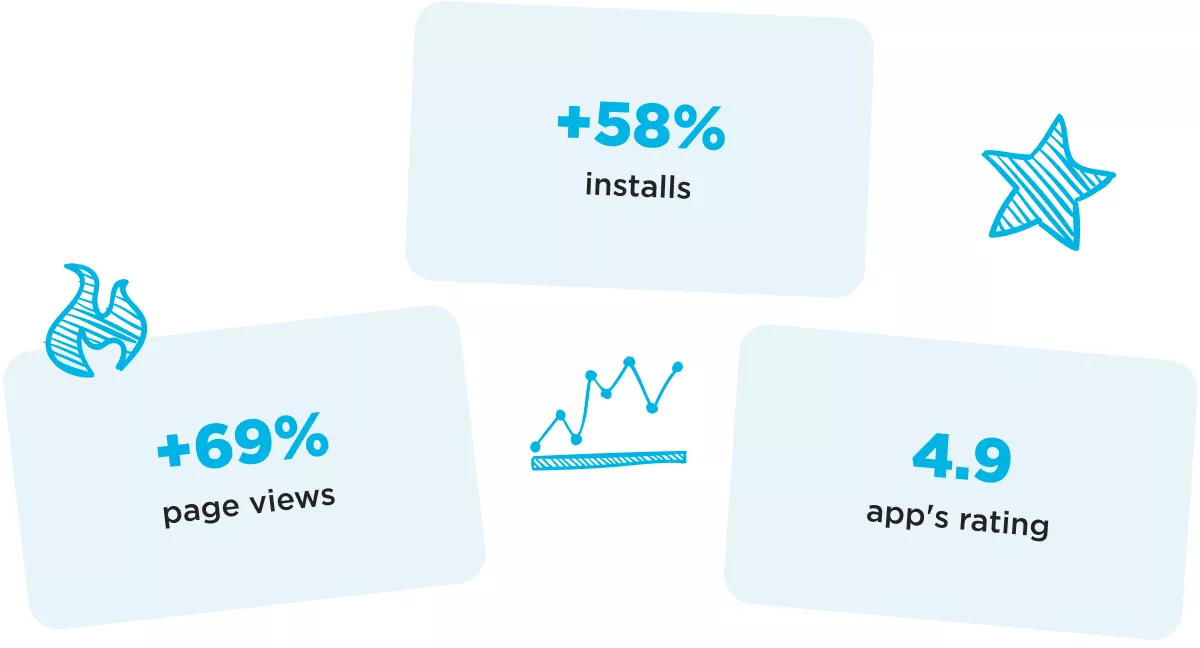How We Doubled App Installs and Raised Our Client's App Rating to 4.9 in the App Store and Google Play: A Case Study in the Shopping Niche
For fashion retailers, a mobile app is more than just another sales channel — it’s a familiar and convenient way to engage with their audience. However, even a strong brand can remain invisible without effective ASO.
In this case study, we share how we helped a multi-brand clothing and footwear retailer enhance its app visibility, nearly double organic installs, and raise its rating from 3.6 to 4.9 through optimization, seasonal campaigns, and targeted user communication.
Project: A fashion retail app
Promotion period: May 2024 — June 2025
Promotion region: Ukraine
Service: App Store Optimization
About Our Partner
A multi-brand retailer of clothing, footwear, and accessories with both online and offline operations.
Cooperation Goals
The company has long been established in the Ukrainian market, but its mobile app had not reached the expected level of popularity. Since mobile apps are a key channel for fashion retailers, the partner chose to focus on promoting it in the App Store and Google Play.
Our goals:
- Increase visibility in search results
- Drive more app installs
- Improve user ratings
Team Actions
We divided the work into several key steps to address everything from keyword optimization to performance evaluation and ratings:
Step 1. Competitor Analysis and Semantics Collection
At the first stage, we identified relevant keywords and assessed their popularity. We also analyzed how competitors approach text optimization, focusing on three groups:
- Ukrainian clothing, footwear, and accessory retailers.
- Large marketplaces with a wide assortment of goods.
- Foreign platforms popular among Ukrainians (e.g., Allegro, eobuwie.pl). Since 2022, these brand names have increasingly appeared in search terms in Ukraine.
Step 2. Metadata Optimization
Next, we prepared metadata for three locales indexed in Ukraine: English (UK), Ukrainian, and Russian, applying a tailored approach for each site.
In App Store:
- We placed the most popular and relevant keywords in the Title field.
- We added keyword combinations that reinforce the Title in the Subtitle and Keywords fields.
- We included competitor brand names and other target terms from the semantic core in the Keywords field.
In Google Play:
- We selected up to five phrases that accurately reflect the essence of the app.
- We updated the App Name, Short Description, and Full Description, maintaining the required keyword density (three to five repetitions).
- We used Google Natural Language to ensure the description was correctly identified as a Shopping category, achieving a Confidence score above 0.9.
Step 3. Results Evaluation and New Iterations
In App Store, we regularly updated metadata (once or twice a month) to test different combinations. We kept the ones that consistently placed the app in the top 10; as for those that turned out to be ineffective, we decided to replace them.
In Google Play, we set up Custom Store Listings for branded keywords and updated the description to target a broader range of search terms.
Step 4. App Rating Prompts Strategy
We proposed options for placing rating prompts in the app, taking two key factors into account:
- Unobtrusiveness: It’s important not to overwhelm users with unnecessary push notifications.
- Timing: The prompt should appear when users are most likely satisfied, for example, immediately after successfully placing an order.
Step 5. Seasonal Communication
Throughout the year, we adapted metadata and Custom Store Listings to align with seasonal events in the niche — from back-to-school and Halloween to Black Friday. This approach helped maintain relevance and reinforced the app’s position in search results.
Results of the Promotion
App Store
Results for May 2024–2025
- The number of keywords ranking in the top 10 in Ukraine tripled over the year.
- The new search result positions generated approximately 2,000 additional daily impressionsв.
- Total impressions increased by 20% (excluding seasonal events), while installs surged by 84%.
|
Source type |
Impressions |
Installs |
||||
|
Apr. 2023–2024 |
May 2024–2025 |
Growth, % |
Apr. 2023–2024 |
May 2024–2025 |
Growth, % |
|
|
App Store Search |
236,914 |
285,041 |
+20% |
16,765 |
30,927 |
+84% |
- Thanks to properly configured App Rating Prompts, the app’s rating in Ukraine increased from 3.8 to 4.9.
- The app started ranking in the top 50 for a greater number of popular search terms.
Increase in the number of keywords with SAP > 5 (Search Term Popularity indicator) for which the app ranks in the top 50
Google Play
Results for May 2024–2025
- The app's rating in Ukraine increased from 3.6 to 4.9.
- Page views increased by 68.6%, while installs grew by 58.1%.
On Google Play, organic traffic comes from two main sources:
- Google Play Search — branded search terms
- Google Play Explore — all other keywords
We compiled the results in a table, presenting the dynamics for Google Play Search and Google Play Explore separately.
|
Source type |
Transitions to the app page |
App installs |
||||
|
Apr. 2023 — Apr. 2024 |
May 2024 — May 2025 |
Growth, % |
Apr. 2023 — Apr. 2024 |
May 2024 — May 2025 |
Growth, % |
|
|
Google Play Search |
13,017 |
19,772 |
+51.9% |
10,500 |
14,735 |
+40.3% |
|
Google Play Explore |
5,247 |
11,028 |
+110.2% |
2,154 |
5,266 |
+144.5% |
|
Total |
18,264 |
30,800 |
+68.6% |
12,654 |
20,001 |
+58.1% |
What's Next?
Over the course of a year, the app has become more visible in search results, gained more downloads, and achieved steady growth. We continue to focus on its development by monitoring changes in demand, tracking new keywords, aligning with seasonal events, and testing visual elements — all aimed at strengthening our position and expanding the brand’s market share..
Project team: Liliia Kvyshko (ASO Specialist), Olha Hrek (ASO Team Lead), Aneta Halihuzova (Client Project Manager).
Related Articles
Segments vs. Audiences in Google Analytics 4: A Comprehensive Setup Guide
You will learn how to correctly set up custom audiences, allowing you to save time and gain insight into your audience
PPC for E-commerce: How to Buy Attention Without Going Broke
Learn how PPC for e-commerce can drive fast sales for your store without draining your budget. Smart strategies, beginner tips, and proven ways to scale profitably.
Personalization 2.0: Breaking the Deadlock of Cold Newsletters
Most leads in managerial positions receive dozens of similar messages every day. Below, I will present the algorithms and techniques that increased our partners' campaign conversion rates from 1% to 11%







